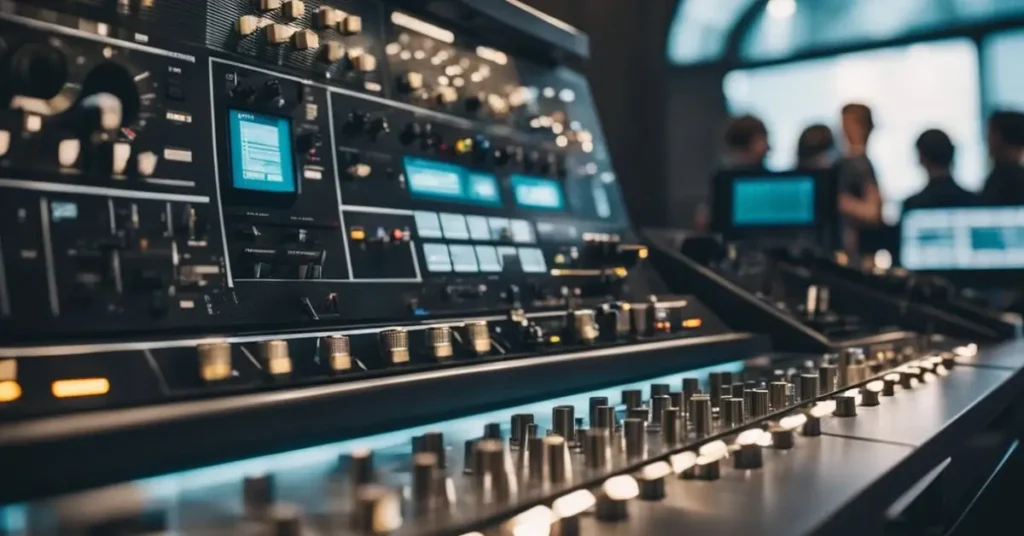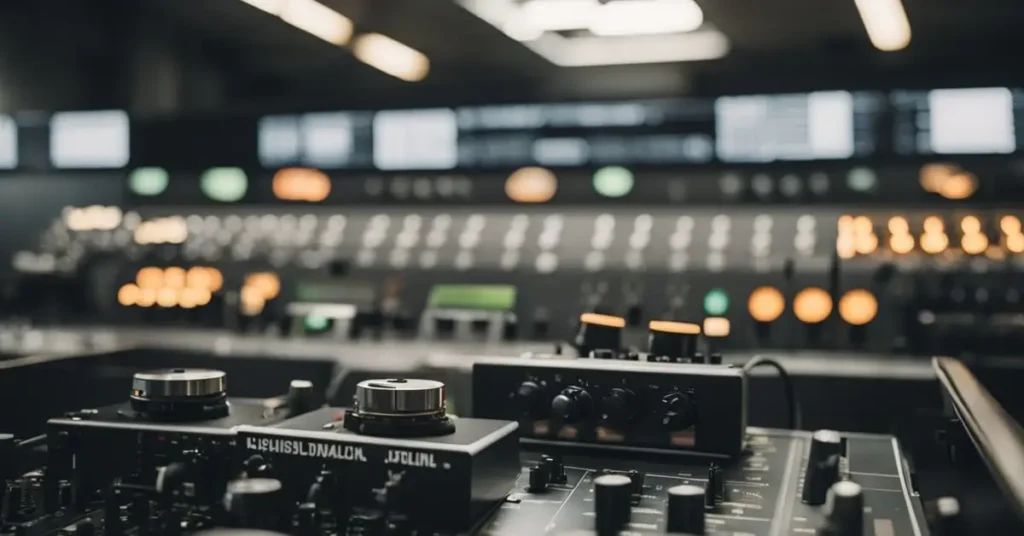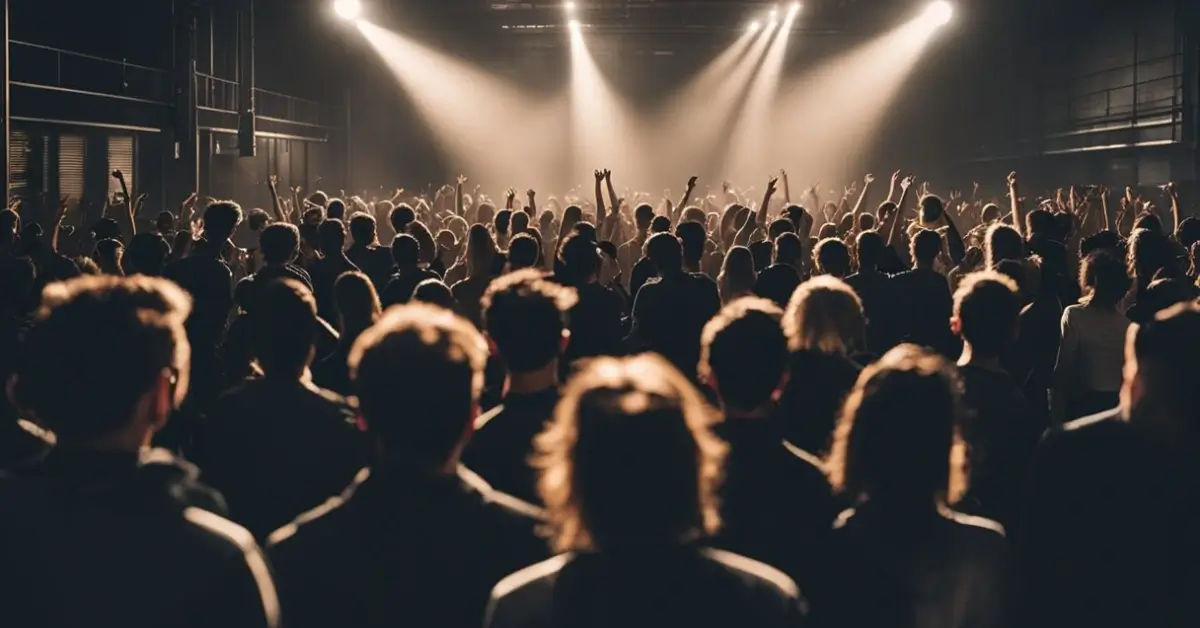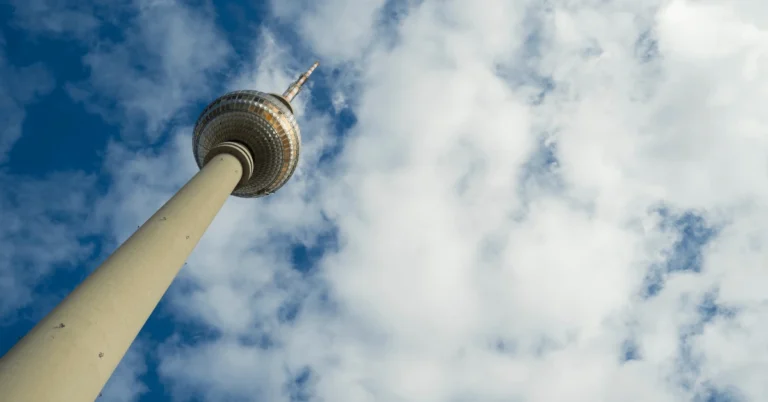As lovers of the vibrant and pulsating Berlin techno scene, we’re excited to dive into the history and culture behind it. For the past few decades, techno music has been synonymous with the city of Berlin, thanks to its innovative clubs and passionate fans.
The emergence of the Berlin techno scene can be traced back to the fall of the Berlin Wall, which paved the way for an explosion of creativity and self-expression. This phenomenon led to the birth of countless sub-genres, ranging from the reggae-inspired dub techno to the industrial edge of Ostgut Ton. From iconic institutions like Berghain to underground events in abandoned buildings, this city has taken techno to a whole new level.
We’re eager to share our knowledge of the Berlin techno scene with fellow enthusiasts, delving into its evolution, the legendary clubs that define it, and the individuals who have played a significant role in shaping it into the world-renowned phenomenon that it is today.
Berlin Techno Scene – Key Venues
We’ve been exploring the best Berlin Techno Clubs, and we’re excited to share with you some key venues that have the best beats. No visit to Berlin is complete without experiencing the immersive atmosphere, pulse-pounding beats, and electrifying energy that these iconic techno clubs have to offer.
Berghain is considered the ultimate destination in the Berlin techno scene. It’s located in a former power plant and is known for its intense atmosphere and selective door policy. With its diverse crowd and a reputation for being the mecca of techno music, Berghain’s impressive lineup will keep you dancing all night long.
Aside from the legendary Berghain, there are a few other notable techno clubs that deserve a visit. KitKatClub, a popular hangout spot for underground and rave enthusiasts, is a perfect example. It offers a unique experience that combines techno beats with a playful, open-minded atmosphere.
Now, if you’re looking for something different from the more famous techno clubs, there are plenty of alternative options out there. For instance, Schokoladen is a great place to enjoy live concerts and immerse yourself in Berlin’s indie culture. Although the city is known for its techno scene, venues like Schokoladen showcase the diversity and creativity that makes Berlin’s music landscape so captivating.
So there you have it, a quick guide to some of the best techno clubs in Berlin. Whether you’re a techno aficionado or just curious about experiencing this iconic scene, be sure to check out these venues during your visit. The unforgettable nights spent dancing to hypnotic beats in Berlin will surely become an essential part of your memories in this vibrant city.
Notable Artists

We absolutely love Berlin Techno music, and we wanted to take a moment to shine a spotlight on some of its most notable artists. These musicians have made a significant impact on the scene through their unique sounds and iconic performances in the city’s world-renowned clubs.
First off, let’s talk about Ben Klock. This Berlin-born DJ has become a mainstay in the city’s techno ecosystem and is a resident at the famous Berghain club. His energetic and soulful mixes have earned him a place on lineups around the world, from Tokyo to New York.
The city has also attracted artists from other countries, such as Canadian minimal techno pioneer Richie Hawtin. Hawtin’s meticulous, high-quality sets have made him a crowd favorite in Berlin’s techno clubs. His label, M-nus, has been influential in shaping the sound of the city’s techno movement over the years.
Aside from DJs, Berlin is also home to talented artists who have showcased their work in unique, techno-oriented spaces. For example, STUDIO BERLIN hosts exhibitions at the Techno-Club Berghain, featuring works by more than 100 local artists such as Katharina Grosse and Anne Imhof. This blend of music and art has become a defining characteristic of Berlin’s techno scene.
In conclusion, the Berlin techno scene is a vibrant, ever-changing landscape with a wide range of talented artists. From homegrown heroes like Ben Klock to international heavyweights like Richie Hawtin, these musicians continue to push boundaries and redefine the genre for future generations. It’s an exciting time to be a fan of Berlin techno, and we can’t wait to see where the scene goes next.
Influential Record Labels
As enthusiasts of the Berlin techno scene, we can’t help but admire the influential record labels that have helped shape this iconic musical movement. In this section, we’ll take a brief look at some of these key players and their impact on the development of techno music.
One significant name that emerges from the Berlin techno scene is Basic Channel. Founded by Mark Ernestus, Basic Channel played a vital role in establishing the dub techno sound in the city. The success of Basic Channel led to the rise of the Rhythm & Sound project, which further cemented Berlin’s reputation as a hub for techno innovation.
Another noteworthy label from the Berlin techno scene is Hardwax. Launched during the early years of techno, Hardwax has remained an influential player over the years, supporting both emerging and established artists. The label’s focus on cutting-edge electronic music has helped redefine the techno genre and contributed to its ever-evolving landscape.
Additionally, the Force Inc. label has played a significant role in the growth of techno music in Berlin and beyond. Known for releasing a diverse mix of house and techno, the label has made a lasting impact on the scene by showcasing some of the finest talent from around the world.
Finally, it’s worth mentioning Ontario-based label Plus 8, founded by Richie Hawtin and John Acquaviva. Though not directly based in Berlin, Plus 8 has been instrumental in supporting the second wave of Detroit techno and fostering relationships with essential artists such as Speedy J and Kenny Larkin.
These influential record labels have each left their mark on the Berlin techno scene, shaping it into the thriving, diverse, and innovative landscape that we all know and love today.
Impact on Global Electronic Music

The Berlin Techno Scene has had a significant impact on the global electronic music landscape. Known for its progressive and innovative sound, techno music from Berlin has influenced not only a wide range of artists but also the overall electronic music industry.
One way Berlin’s techno scene impacted electronic music is by inspiring new sub-genres and musical styles. The gritty, raw beats and hypnotic rhythms of Berlin techno served as a foundation for various artists to experiment and create their own unique sound. This has led to the birth of various sub-genres like minimal techno, acid techno, and dub techno, which have thrived globally.
Additionally, the Berlin Techno Scene fostered a collaborative environment for artists and DJs to come together and share their passion for electronic music. This sense of camaraderie attracted international talent to the city, making Berlin a melting pot of creative musical minds. Together, they’ve pushed the boundaries of techno music, setting trends and driving the evolution of electronic music around the world.
Besides the creative aspect, the city’s no-curfew culture also contributed to the global influence of Berlin’s techno scene. This unique aspect of the city’s nightlife allowed clubs like Berghain and KitKatClub to create unparalleled party experiences, which became world-renowned. Consequently, artists and event organizers from other countries have adopted similar strategies, leading to a proliferation of techno events with open-hours culture worldwide.
Style and Characteristics

We are thrilled to talk about the Berlin Techno Scene and its unique features. Let’s delve into the details by exploring three main aspects of this fascinating music culture: sound and production, lyrics and themes, and performance and presentation.
Sound and Production
The sound and production in the Berlin Techno Scene varies across a spectrum of styles, but some common elements can be found. Over the years, this scene has evolved into different subgenres and micro-scenes, ranging from the reggae-inspired dub techno to the gritty industrial edge of Ostgut Ton. The use of synthesizers, drum machines, and samplers is prevalent, creating distinct and hypnotic beats that captivate listeners.
Lyrics and Themes
Although the focus of the Berlin Techno Scene is primarily on the instrumental aspects, lyrics and themes can still play a role in the music. The language of the lyrics can vary greatly, often reflecting the diverse cultural backgrounds of the artists involved. The themes found in the music can revolve around personal experiences, emotions, and social issues. However, it’s the mesmerizing beats and intricate rhythms that truly drive the dance floors in Berlin’s vibrant techno clubs.
Performance and Presentation
The performance and presentation of techno music in Berlin are as diverse and unique as the city itself. From the legendary Berghain to smaller underground venues, the clubbing experience in this city offers something for everyone. Clubbers often dress up and go all-out when attending events, contributing to the distinct fashion and style associated with the Berlin Techno Scene. It’s essential to mention that the atmosphere in these clubs is not just about music but also about connecting with others and expressing oneself freely through dance and fashion.
FAQ – Berlin Techno Scene
Why is Berlin known for techno?
Berlin is known for techno due to its vibrant and influential club culture that emerged during the reunification of the city in the early 1990s. The fall of the Berlin Wall led to an abundance of vacant spaces and buildings, which were transformed into underground clubs and raves. This atmosphere of freedom and rebellion allowed techno music to thrive, making Berlin synonymous with the genre.
What is the famous rave in Berlin?
The most famous rave in Berlin is arguably the Love Parade, which started in 1989 and was held annually in Berlin until 2003. It began as a political demonstration for peace and understanding through music and grew into a massive event attracting millions of techno and electronic music enthusiasts from around the world. Another renowned venue is the Berghain nightclub, known for its techno music and exclusive entry policy.
Which city has the biggest techno scene?
Berlin is often considered to have the biggest techno scene in the world. The city is renowned for its numerous techno clubs, underground raves, and a culture that has embraced electronic music since the fall of the Berlin Wall. The vibrant nightlife and iconic venues like Berghain, Tresor, and Watergate have solidified Berlin’s status as the global epicenter of techno music.
What are your tips on the Berlin techno scene? Let us know in the comments!






